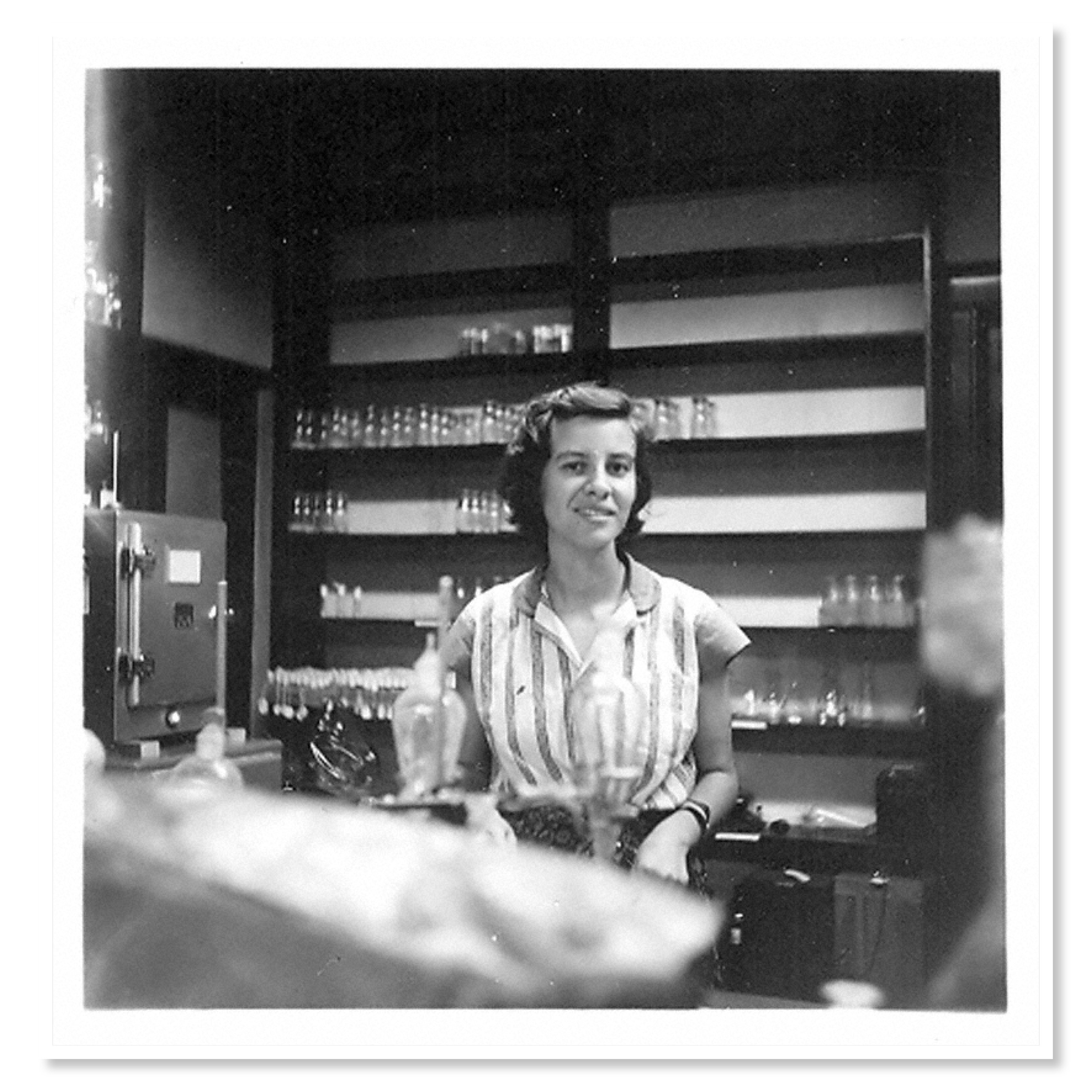Esther Lederberg is standing on an ornate carpet in Stockholm, wearing a ruched gown and a rather serious expression. It’s an unusual getup for the pioneering scientist, who more often wore a lab coat and a wry grin. But it is also an unusual night. The year is 1958, and Lederberg, 35 years old, has been invited to a tony ceremony in Sweden not as a bacterial geneticist but as a wife. Alongside other spouses, she will look on while three men—her first husband, her mentor and another research partner—are jointly awarded the Nobel Prize, for work connected to her own.
“It’s this group of four people who worked on things,” says Rebecca Ferrell, a biologist who has researched Lederberg’s life. “The three guys get the prize, and she gets to put on gloves and a long gown and watch.”
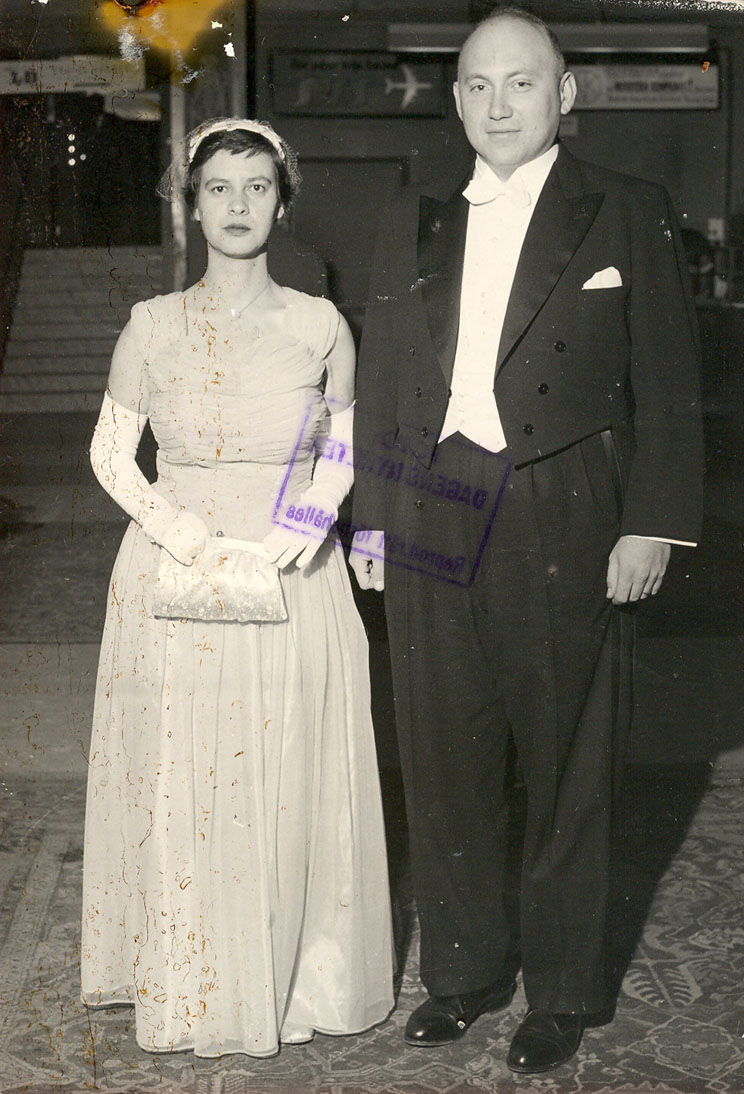
That bittersweet evening is immortalized in photographs viewable online, thanks to Lederberg’s second husband, Matthew Simon. Since Lederberg’s death in 2006, he has dedicated most of his waking hours to building an elaborate memorial website in her honor. It exhaustively catalogs her photographs, her papers, her discoveries, even her extracurricular interests. The project is a labor of love. But it is also an argument: Simon, along with others, believes that Lederberg has been overshadowed and underappreciated because she was a woman. “She should have been given credit,” Simon says, “for what she, in fact, did.”
What Lederberg did was spend decades investigating the way micro-organisms share genetic material, trailblazing work at a time when scientists had little sense of what DNA was. So did her first husband, Joshua Lederberg, who died in 2008. Yet far more people have heard of him than of her, a disparity that some experts attribute to a phenomenon known as the Matilda Effect. The term, coined by scientific historian Margaret Rossiter, is a nod to 19th century suffragist Matilda J. Gage, who, as Rossiter puts it, first described the bias that has led to female researchers being “ignored, denied credit or otherwise dropped from sight” throughout history.
The good news is that invisible women are becoming more visible because of a growing movement of advocates—ranging from passionate individuals like Simon to academics and filmmakers. Several people who knew Lederberg say that by the end of her life, she had come to believe that it was silly to worry about one’s reputation, that the science was what really mattered. A dozen years after her death, that equanimity still eludes her widower. “Her attitude was, ‘Forget it, I’ll be forgotten anyway,’” Simon says. “My attitude was, I’m angry.”
Born in 1922, Esther Miriam Zimmer came of age in New York City during World War II. Her family was poor. Her father worked as a printer, his siblings as garment workers. But Esther, a voracious learner, would fly far beyond the Bronx neighborhood where she grew up. At Hunter College, which she attended on a scholarship, she studied biochemistry, even though she was told the subject was “too difficult for women,” Simon says. She went on to earn a master’s in genetics at Stanford University, where, as Simon writes on the website, she sometimes made ends meet by eating frogs’ legs after dissections.

Esther met Joshua Lederberg shortly before she graduated from Stanford. They married months later, when she was 23 and he was 21, and soon headed off to the University of Wisconsin, where they would begin years of fruitful collaboration and she would earn a Ph.D. Joshua, by all accounts a brilliant thinker, became famous for his big ideas. Esther, meanwhile, developed expertise as an experimentalist, doing the often tedious work of testing big ideas in the lab.
“I’m sure that Esther benefited by being in Josh’s presence,” says Millard Susman, a professor emeritus of genetics at the University of Wisconsin–Madison who arrived shortly after the Lederbergs left. “But obviously Josh benefited by being in Esther’s presence too.” Throughout the 1950s, they published papers together and apart as both made discoveries about bacteria, proving that those simple species could reveal “the chemical events that all life depends on,” as Susman puts it.
Joshua won the Nobel Prize for upending the notion that bacteria always make identical copies of themselves when they reproduce; he discovered that they can also engage in something that looks more like sex, mixing genetic material and producing something new. Esther worked alongside him and made related discoveries, like identifying a “fertility factor” that allows that mixing to happen. She also discovered a virus she named lambda phage, which would later help reveal the mysteries of DNA and the expression of genes. Such revelations, which the Lederbergs worked on with other collaborators as well, unearthed basic principles of what would become molecular biology, setting the stage for fields like genetic engineering.
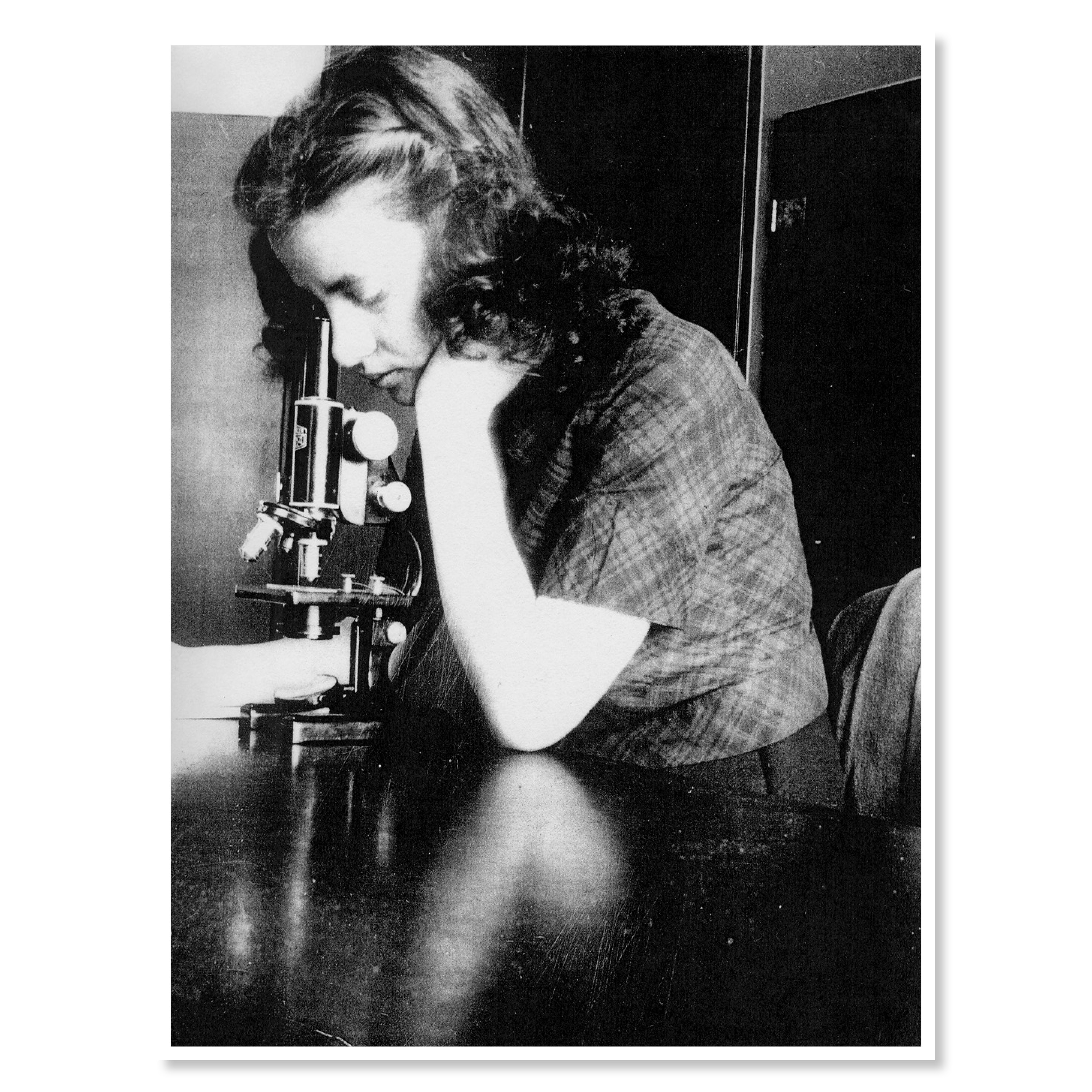
The Lederbergs took joint credit for developing a technique called replica plating. For decades, scientists used a toothpick-like tool to move one cluster of bacteria at a time in the lab. In 1952, the Lederbergs showed that hundreds of colonies could be moved at once by using a material like velvet. They used replica plating to do landmark work showing that mutations happen randomly in evolution rather than because they are needed—a hotly contested topic at the time—and the process was adopted widely. “It’s the difference between handwritten manuscripts and a printing press,” says Ferrell, a professor of biology at Metropolitan State University of Denver. Ferrell sees Esther “all over it.” After all, she was a practical scientist who came from a family of textile workers.
The question of who gets credit in a laboratory is always a messy business, but there is little doubt that Esther became marginalized after her husband won the Nobel Prize. In 1956, two years before, the Lederbergs had jointly won the Pasteur Award, a prize for “outstanding contributions” to science. Joshua had won another award, the Eli Lilly, in 1953 and subsequently told a reporter, “Esther should have been in on that too.” In a remembrance written after Esther died, noted microbiologist and Stanford professor Stanley Falkow said Esther’s “independent seminal contributions in Joshua’s laboratory … surely led, in part, to his Nobel Prize.”
Joshua did recognize her in his Nobel lecture, saying he had “enjoyed the companionship of many colleagues, above all my wife.” But it was brief, and after they got home, he was invited to lead the department of genetics at Stanford while she was offered a research-associate position in a different department. The era of their being “a husband and wife science team,” as one 1956 article put it, was ending.

Only the two of them could say why their relationship faltered, but by 1966 they were divorced. One young scientist Esther befriended in the 1970s, Dennis Kopecko, recalls her being generous and uncompetitive but also “irascible” in the years that followed. Joshua, he says, became a “giant in the field” and would walk by Esther and Kopecko in the Stanford cafeteria without acknowledging their presence.
According to Simon, Esther eventually received a faculty appointment only because she was willing to accept a job without tenure. Another colleague, Brandeis University historian of science Pnina G. Abir-Am, says Esther had to fight to keep a job at the school after she and Joshua split up. Though she worked at Stanford until retiring in 1985, “she never had a position commensurate with her position in science,” Abir-Am says. (Stanford, reached by TIME, did not provide comment.)
Mark Martin, who developed a friendship with Esther while he was a graduate student at Stanford in the 1980s, is one of many scientists who laments that Esther’s name has been absent from textbooks. Now an associate professor of biology at the University of Puget Sound, Martin teaches students about her when he explains bacterial genetics. “I don’t think that you own something that you discover. It was there before you were born,” he says. “But I do believe in credit. And that means that if somebody does something, you bring that up. That’s your job.”
The Matilda Effect goes hand in hand with another phenomenon: the Matthew Effect. Per the Gospel of Matthew, those who have plenty shall have more in abundance, while those who have little will find it taken away. Rossiter, now a professor emerita at Cornell University, thought there should be more focus on the fact that female scientists had for centuries ended up on the short end of this maxim. She wrote a paper introducing the term in 1993, and, she says, “it took on a life of its own.”
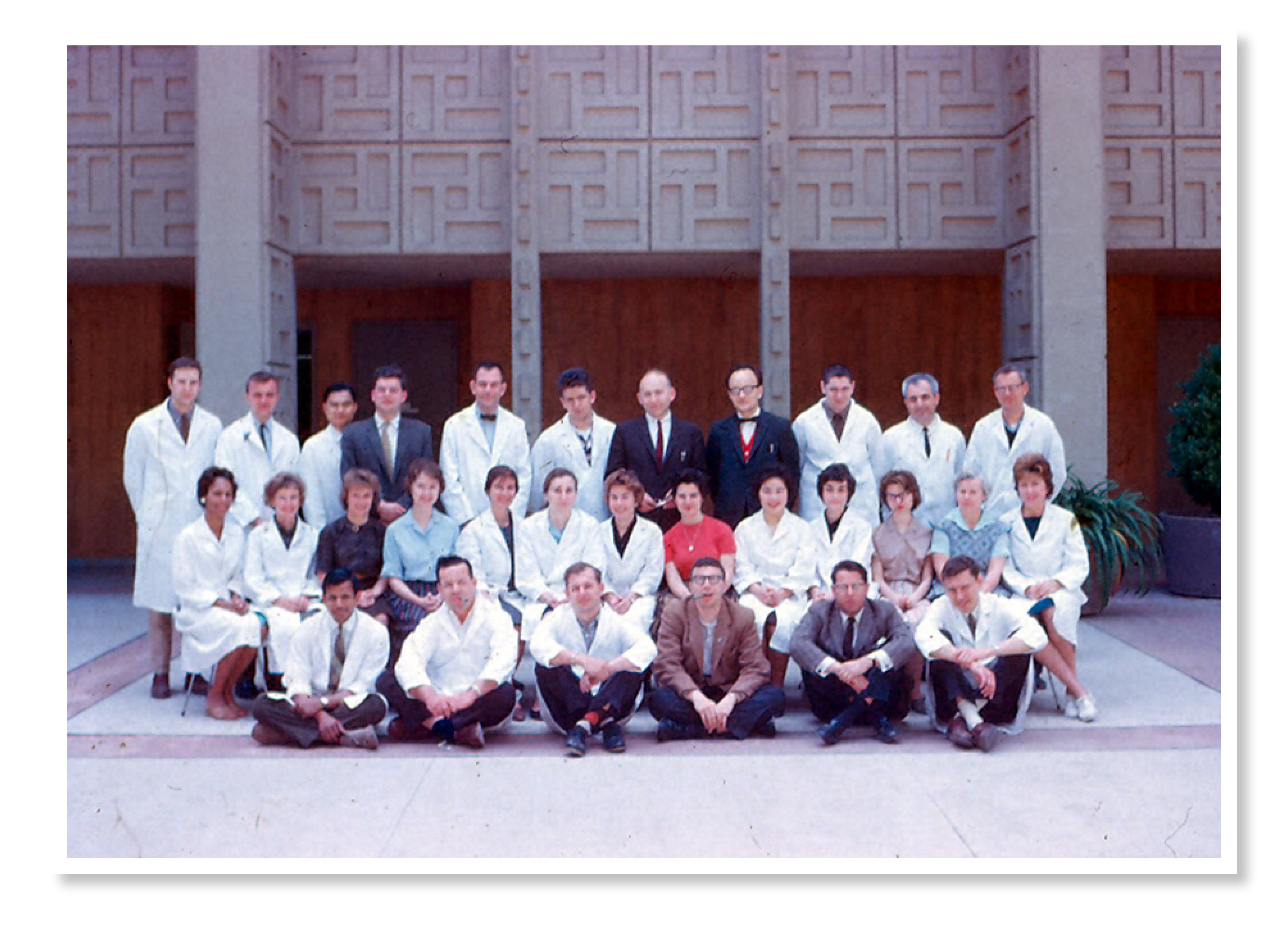
Rossiter was far from the first person to point out that women have faced unfair professional hurdles while men have enjoyed unacknowledged advantages. But her coinage has been put to use as a corrective fervor has filled the air. The movement to give women their due is evident in tweets and articles about “Matildas,” sidelined contributors in fields ranging from nuclear physics to cancer research. It’s apparent in films like the Oscar-nominated Hidden Figures, a true story about black female mathematicians, including Katherine Johnson, who helped NASA get white men like John Glenn safely into space. (In February, NASA renamed a facility for her.)
It’s also in papers written by academics who have put some numbers on the phenomenon. In one 2019 study, a team from Brown University and San Francisco State University reviewed two decades’ worth of population-biology papers and found that while women accounted for 43% of programmers listed in little-viewed acknowledgments, they made up just 7% of authors. Naomi Oreskes, a historian of science at Harvard University, has documented the “invisibility” of women in the world of geophysics and has explained that such imbalances perpetuate the myth that science is “an almost exclusively male preserve.”
The story of Esther Lederberg, Oreskes writes in an email, is a “sadly familiar” one. Throughout the 20th century, many women in science were hired in positions that presented them with greater burdens of fundraising and less job security. When they did publish papers, male colleagues often got credit. And women who worked alongside their husbands were routinely assumed to be glorified assistants. “The fact that they were Lederberg and Lederberg and they were married meant that one of the names just got dropped off,” Jo Handelsman, a microbiologist who directs the Wisconsin Institute for Discovery, says of Esther’s legacy.
Rewriting history is hard, but telling stories from a new point of view can be a catalyst. Take Rosalind Franklin, the scientist whose X-ray photograph of a double helix was crucial in allowing Francis Crick, James Watson and Maurice Wilkins to understand the structure of DNA. They became world renowned for their discovery, winning the Nobel Prize, while Franklin received little attention. That is, until accounts like the 1975 book Rosalind Franklin and DNA pushed her to the fore. By 2015, Nicole Kidman was playing Franklin in an award-winning West End play. This year, the European Space Agency announced that a new Mars rover would be named after her.
Today more work is going into identifying the barriers to women’s participation in science, like the stereotype that women are innately unsuited to the work. Though studies suggest that women still account for only 30% of the world’s researchers, numbers are improving in fields like life sciences. And women are getting more recognition, as advocates push for more gender diversity on prize committees long chaired by men. In 2019, mathematician Karen Uhlenbeck became the first woman to receive the prestigious Abel Prize. After the announcement, she described herself as part of the first generation of women who could actually get “real jobs” in academia.

Compared with blockbuster films, Simon’s crusade is a quiet one. The 77-year-old has bushy white eyebrows and wears hearing aids, but any sign of age belies his stamina. On a good day, he says, he still spends 16 or 17 hours working on the Esther M. Zimmer Lederberg Memorial Website, operating out of a back room in his low-slung home in Palo Alto, Calif. The project has become a mammoth network of more than 38,000 items. Sitting on a couch in the living room he and Esther once shared, he laughs as he imagines her reaction: “You’ve been doing this thing for 12 years. Are you crazy?”
They met in 1989 when Simon, an engineer, attended a meetup for singles in Palo Alto and asked if anyone knew where he could hear some baroque music. A woman about 19 years his senior, who happened to play those kinds of tunes on the recorder, spoke up. “It was Esther,” Simon says with a smile. They married in 1993, and 13 years later, he was left grief-stricken after she died from a combination of congestive heart disease, diabetes and kidney failure.
In the haze that followed, Simon started going through his wife’s things and decided to build an archive. He began by cataloging decades of photographs she had taken, which included scientific meetings with men who would become the world’s most prominent geneticists. She had identified everyone using a numbered key, but Simon couldn’t find it. So he had his first challenge: figuring out who everyone was. “It’s like being a detective,” he says.
Then one day he opened an envelope and found a research paper. This appears to be where the site began to evolve into a polemic, as Simon dug into the technicalities of the world his wife had inhabited, detailing her innovations and publications, analyzing who was due credit for various discoveries.
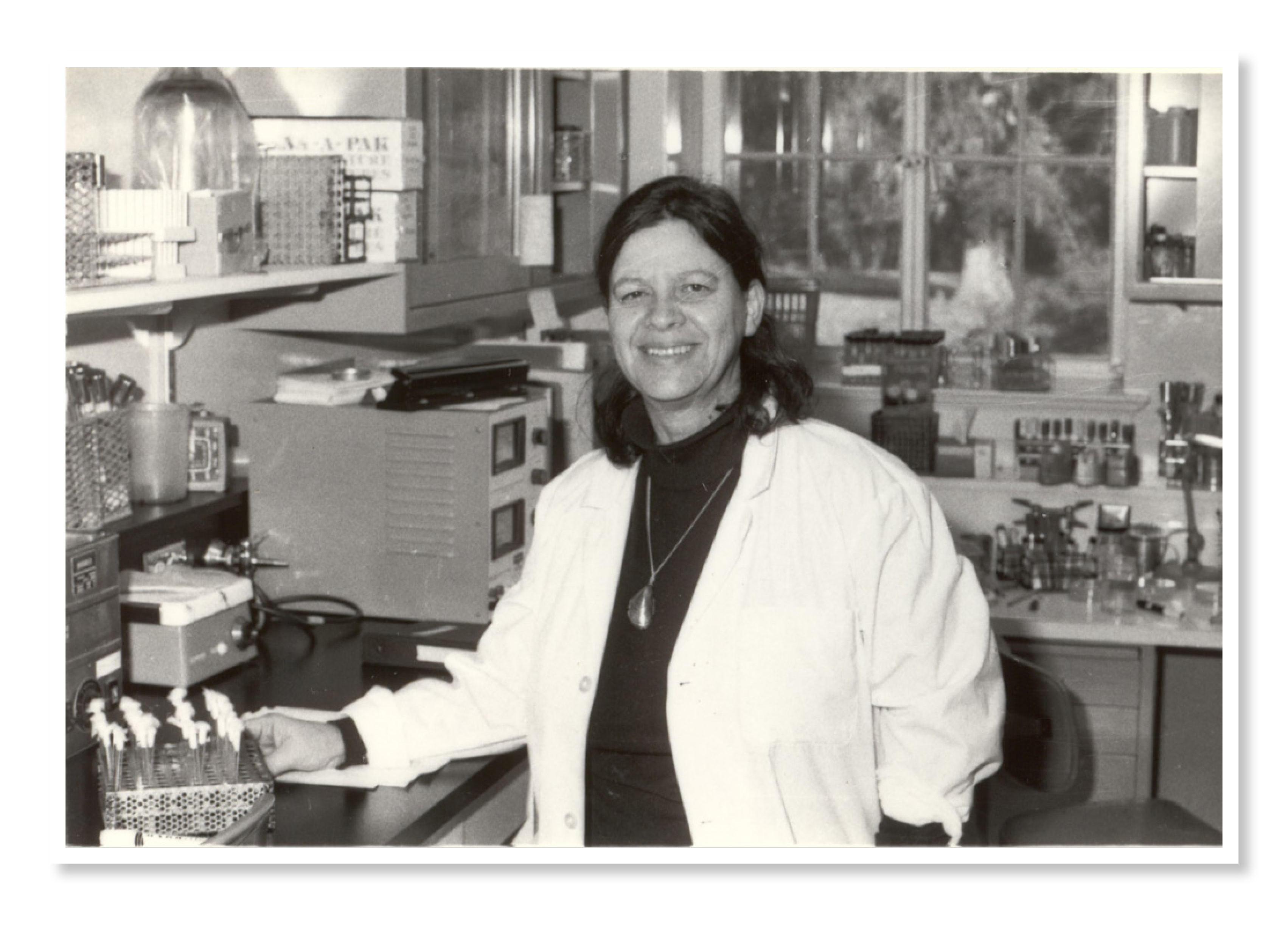
While the site is imbued with Simon’s adoration of Esther, a prosecutorial aggression is present too. He lists, for example, eight pieces of evidence to show how central she was to developing replica plating, noting that a profile on her husband published by the U.S. National Library of Medicine doesn’t mention her contribution at all.
Simon, who has coded the site himself, doesn’t keep track of how many people visit. One gets the sense that he doesn’t really care, that what matters to him is making sure that this version of history—in which Esther Lederberg is the protagonist—has been made available. “I figure I’m going to die, and someone may want to look at this a hundred years from now,” he says. “Who knows?”
The website is finding an audience. Ferrell drew from it when writing about Esther for the American Society for Microbiology, which published a book last year dedicated to women in the field. After all her research, Ferrell doesn’t think we know enough to say whether Esther’s work merited a Nobel Prize. But she firmly believes that the female Lederberg got shortchanged. “If Esther would have been a man,” she says, “all kinds of things would have been different.”
Lederberg’s legacy matters because she is more proof that science is and has been a realm of women. Today women are better represented, but prejudices linger. And young girls still have fewer scientific role models than boys do.
“We have to work really, really hard on this in our society on every front,” says Handelsman, director of the Wisconsin Institute for Discovery. “Just the fact that her story is being told now is a triumph.”
- Introducing the 2024 TIME100 Next
- The Reinvention of J.D. Vance
- How to Survive Election Season Without Losing Your Mind
- Welcome to the Golden Age of Scams
- Did the Pandemic Break Our Brains?
- The Many Lives of Jack Antonoff
- 33 True Crime Documentaries That Shaped the Genre
- Why Gut Health Issues Are More Common in Women
